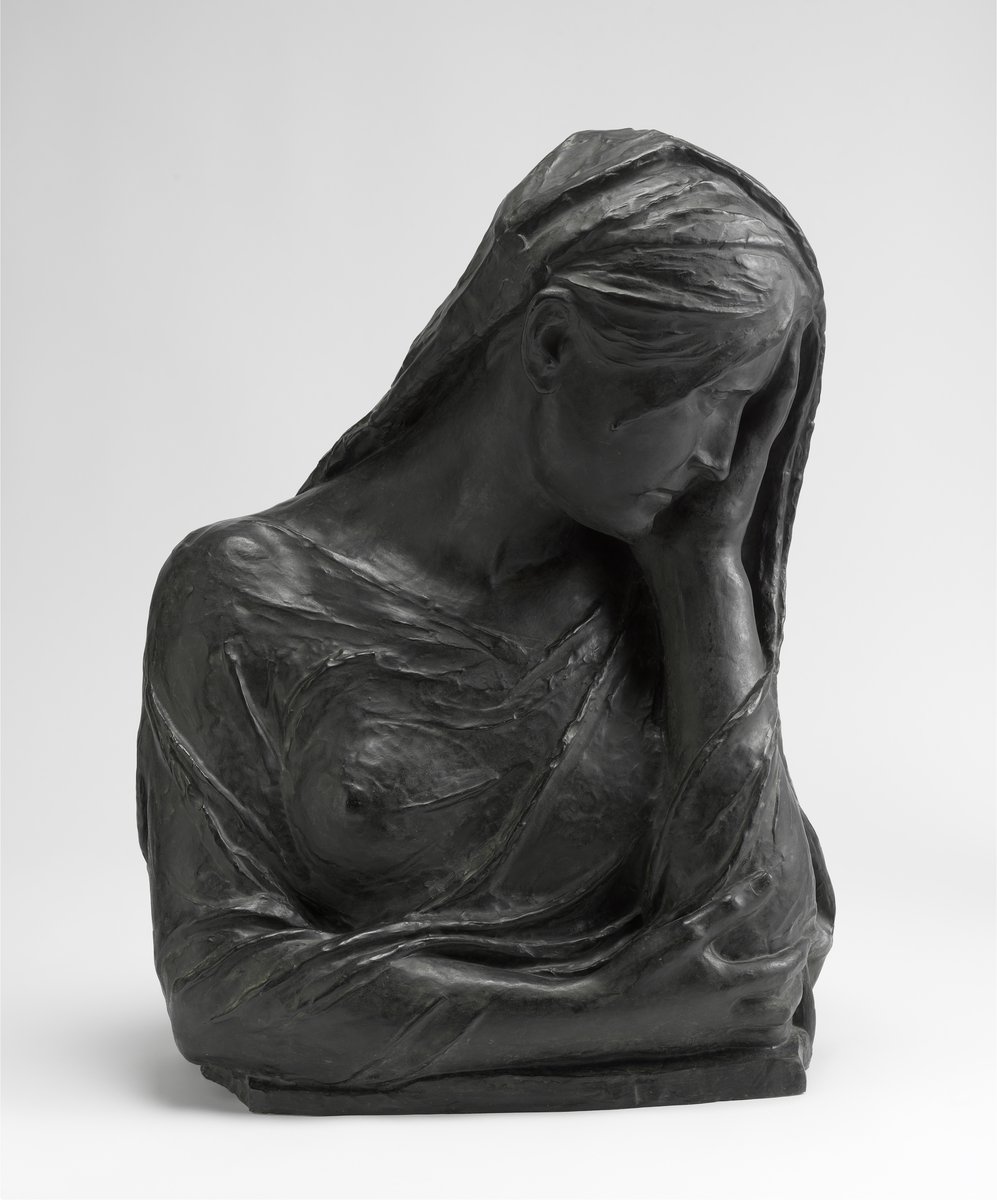
Melancholy
Department of Art after 1800
Building D, 1st floor, Cabinet exhibition - 15 June 2022 – 14 February 2023
The chamber exhibition presents a small selection from the Belgian symbolist sculptures of the Museum of Fine Arts’ collection of international art. Brussels grew into one of Europe’s cultural centres at the end of the nineteenth century. Sculptors also contributed to this sparkling scene, which encompassed the whole of Belgian culture at the time. From 1897, Belgian artists regularly participated in international exhibitions organised in Budapest, and their works soon entered Hungarian public collections. As a result of a well-thought-through and consistent purchasing policy, the Belgian symbolist sculptures now form a representative and coherent unit of the Museum of Fine Arts’ collection of international art. The current show presents ten sculptures from the works of this notable material.
Standing at the cross-section of diverse cultural influences throughout its history, Belgium won its independence during the revolution of 1830–1831. The revival of historical painting in the mid-nineteenth century was a turn of similar international significance in the history of autonomous Belgian culture and art as the development and spread of a new aesthetic at the end of the century. In this characteristically transitory era, often described as decadent, the crumbling of traditions and conventions was seen by many as liberation from oppressing social norms. The literary and art scene in Brussels gave especially vivid and far-ranging responses to the intellectual changes of the day. The strength of this cultural paradigm shift is attested to by the emergence of many youthful and dynamic art circles as well as periodicals supported by the influential writers of the period (Verhaeren, Maeterlinck, Rodenbach). The events and exhibitions organised by them, combining the visual arts, music and poetry, aroused the attention of domestic and foreign contemporaries throughout Europe. The group called Les XX (Les Vingt), whose name alone anticipated the twentieth century, received the greatest international response and included such renowned painters as James Ensor, Fernand Khnopff, Théo van Rysselberghe and Félicien Rops.
The most important and most widespread trend in the Belgian renewal of art at the turn of the century was Symbolism with works having sensuality, magic profundity, the manifestation of demonic forces (femme fatale), as well as the inner world of man and the seeking of ideals at their focus. Sculptures that belonged to the realm of symbolism formed a distinct group and attracted special attention within the Belgian cultural revival: some artists, such as Constantin Meunier, had already established their names, and Charles van der Stappen, a teacher at the Royal Academy of Fine Arts in Brussels, introduced fundamental reform to foster the creative development of young artists, while supporting talented artists at the start of their careers, such as Victor Rousseau and Paul Du Bois. The new sculptural means of expression in the works of George Minne, the foremost representative of Belgian symbolist sculpture, as well as in those of some of his contemporaries exerted a productive influence on expressionism and the abstract language of form that developed from it.
The artists of new Belgian sculpture regularly exhibited their works at international shows in Munich, Berlin, Vienna, Budapest and other places. They had a major influence on the artistic development of these countries and left a lasting mark on their public collections. Belgian artists were already included in rather large numbers at the 1897 exhibition held at the Műcsarnok (Kunsthalle) in Budapest, and they later returned regularly to its exhibitions, where the Hungarian state made numerous purchases for the Museum of Fine Arts. Thanks to these acquisitions, Belgian fin-de-siècle sculpture is now one of the distinctive and comprehensive units in the Museum of Fine Arts’ collection of modern international art.
The exhibition was realised with the support of Wallonie-Bruxelles International.
15 June 2022 – 14 February 2023
Online ticket purchase